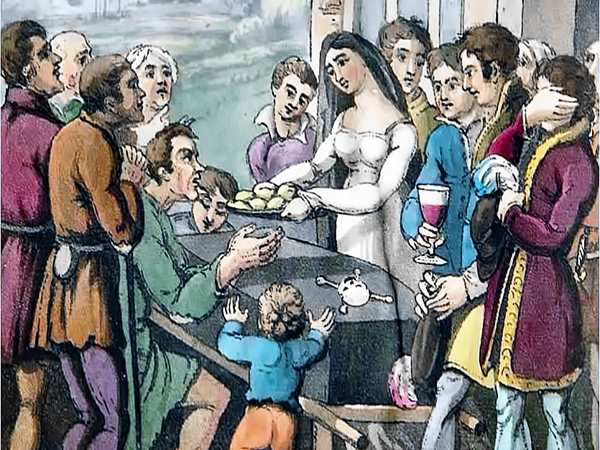In the shadows of ancient English lore lies the chilling and mysterious tradition of the Sin Eater. A figure of both fear and necessity, the Sin Eater’s duty was to consume the sins of the recently deceased, ensuring their soul’s peaceful passage into the afterlife. Though little studied, this practice was once a moribund but significant part of English burial rituals, dating back centuries.
What Is a Sin Eater?
The role of the Sin Eater was a somber one—this person was tasked with absorbing the sins of the dead through a ritualistic meal of bread and ale. Upon finishing, the Sin Eater would make a solemn pronouncement, absolving the departed of their sins while symbolically taking them on as his own. This morbid duty left the Sin Eater ostracized by society, often living in seclusion due to his association with death and evil spirits.
Origins and Historical Accounts
One of the earliest accounts of the Sin Eater comes from the famous English antiquarian John Bagford in the late 17th century. He described a man who sat outside a house, consuming food and drink before declaring the soul of the deceased had departed. This peculiar ritual might have been reserved for individuals with particularly troubled souls, who posed a risk of returning as revenants—restless spirits seeking vengeance or closure.
The Last Sin Eater: Richard Munslow
The legend of Richard Munslow, considered the last Sin Eater in Shropshire, England, persisted well into the early 20th century. Munslow, who died in 1906, was called upon to eat bread and drink ale over the grave of the deceased. During the ritual, he would implore the restless spirit to find peace and avoid haunting the living. This belief in the Sin Eater’s power was especially strong in rural communities where fear of ghosts and revenants still ran deep.
Sin Eating in Later Years
Though the tradition of Sin Eating began to fade, remnants of it persisted into the late 19th century. In 1893, a holdover of this ritual was observed at a funeral in Market Drayton, Shropshire. A woman handed glasses of wine and funeral biscuits to the pallbearers, an act that mirrored the ancient practice of consuming the dead’s sins. This Victorian custom, though watered down, still echoed the age-old fear of spirits that needed to be placated before they could rest in peace.
Sin Eater’s Legacy
In Bertram S. Puckle’s 1926 book Funeral Customs, the story of a Presbyterian professor witnessing a Sin Eater in 1825 reveals how deeply ingrained this practice was in some parts of rural England. The Sin Eater, shunned and feared, carried the burden of the community’s deceased, a necessary figure in a world where death and the supernatural were closely intertwined. The fee was often just a sixpence, and sometimes the bread was even consumed directly from the corpse—a grim testament to the Sin Eater’s role in society.
Conclusion
Though largely forgotten, the tradition of the Sin Eater remains a haunting reminder of humanity’s fear of death and the unknown. Once a critical figure in English funeral customs, the Sin Eater’s role in absorbing the sins of the dead is an eerie chapter in the history of burial rites. From the legends of Richard Munslow to the remnants of the practice seen in Victorian times, this ancient custom continues to fascinate and chill those who hear its story.

